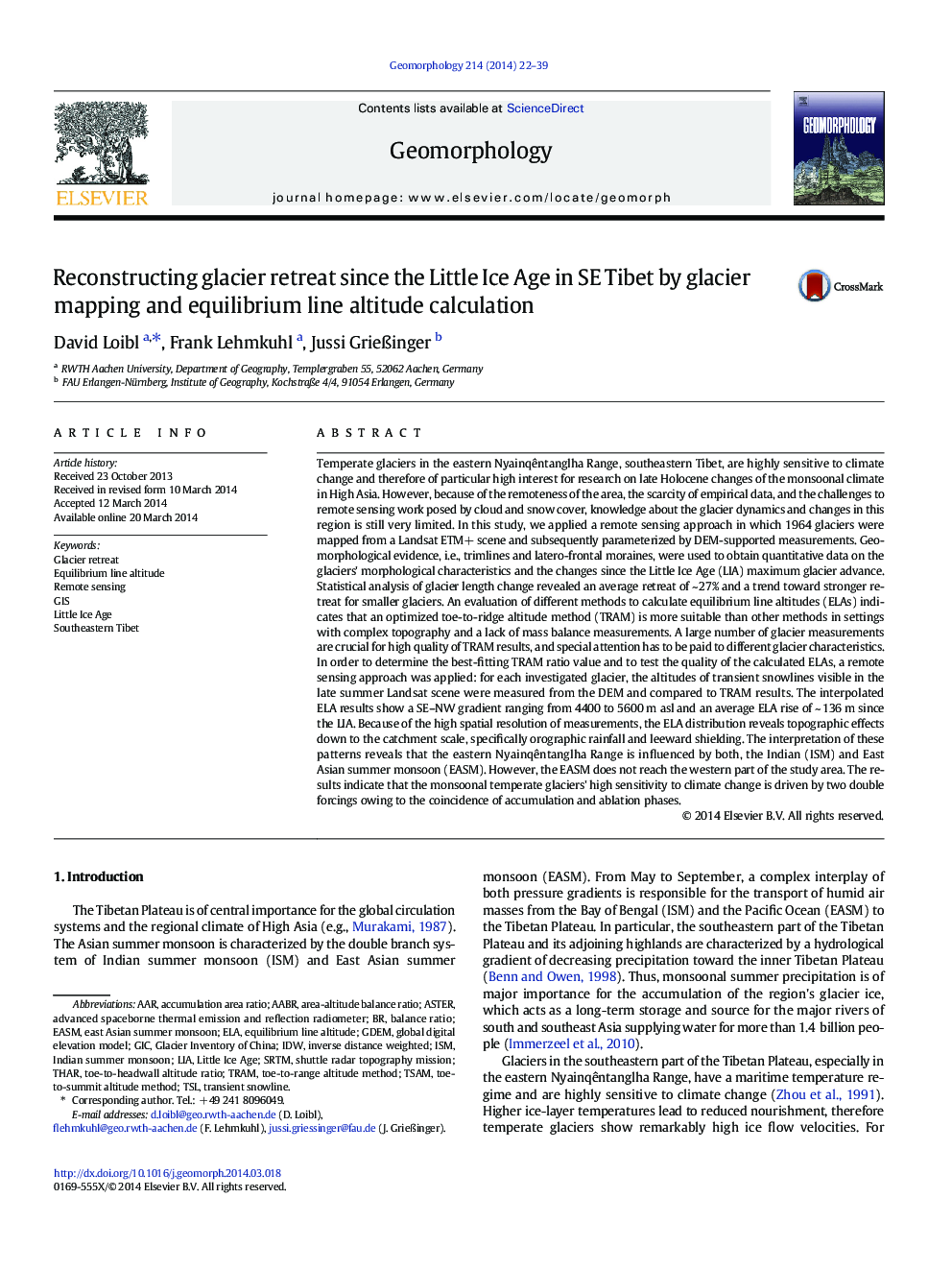| کد مقاله | کد نشریه | سال انتشار | مقاله انگلیسی | نسخه تمام متن |
|---|---|---|---|---|
| 6432530 | 1635435 | 2014 | 18 صفحه PDF | دانلود رایگان |
- 1964 temperate monsoonal glaciers in SE Tibet were mapped by remote sensing.
- Strong effects of local topography are evident in glacial and catchment morphology.
- Remotely sensed LIA terminal moraine positions were used to infer glacier retreat.
- The toe-to-summit method was evaluated and applied for ELA calculation.
- Statistical analyses reveal aspects of the climate-glacier-topography interactions.
Temperate glaciers in the eastern Nyainqêntanglha Range, southeastern Tibet, are highly sensitive to climate change and therefore of particular high interest for research on late Holocene changes of the monsoonal climate in High Asia. However, because of the remoteness of the area, the scarcity of empirical data, and the challenges to remote sensing work posed by cloud and snow cover, knowledge about the glacier dynamics and changes in this region is still very limited. In this study, we applied a remote sensing approach in which 1964 glaciers were mapped from a Landsat ETM+ scene and subsequently parameterized by DEM-supported measurements. Geomorphological evidence, i.e., trimlines and latero-frontal moraines, were used to obtain quantitative data on the glaciers' morphological characteristics and the changes since the Little Ice Age (LIA) maximum glacier advance. Statistical analysis of glacier length change revealed an average retreat of ~ 27% and a trend toward stronger retreat for smaller glaciers. An evaluation of different methods to calculate equilibrium line altitudes (ELAs) indicates that an optimized toe-to-ridge altitude method (TRAM) is more suitable than other methods in settings with complex topography and a lack of mass balance measurements. A large number of glacier measurements are crucial for high quality of TRAM results, and special attention has to be paid to different glacier characteristics. In order to determine the best-fitting TRAM ratio value and to test the quality of the calculated ELAs, a remote sensing approach was applied: for each investigated glacier, the altitudes of transient snowlines visible in the late summer Landsat scene were measured from the DEM and compared to TRAM results. The interpolated ELA results show a SE-NW gradient ranging from 4400 to 5600 m asl and an average ELA rise of ~ 136 m since the LIA. Because of the high spatial resolution of measurements, the ELA distribution reveals topographic effects down to the catchment scale, specifically orographic rainfall and leeward shielding. The interpretation of these patterns reveals that the eastern Nyainqêntanglha Range is influenced by both, the Indian (ISM) and East Asian summer monsoon (EASM). However, the EASM does not reach the western part of the study area. The results indicate that the monsoonal temperate glaciers' high sensitivity to climate change is driven by two double forcings owing to the coincidence of accumulation and ablation phases.
Journal: Geomorphology - Volume 214, 1 June 2014, Pages 22-39
